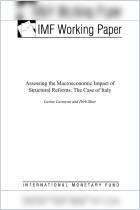For governments, enacting structural changes in the face of slow economic growth remains a challenge. Still, nations must continue to introduce measures – such as infrastructure investment and labor reforms – that stimulate near-term demand. And policy makers need to ensure that a broad swath of the population, rather than a narrow band of privileged individuals, enjoys the fruits of these measures. This OECD survey of global economies provides a comprehensive look at reforms around the world and offers an analysis of which ones are most effective. getAbstract suggests this timely report to economists, policy makers, and government and business leaders.
Needed Change
For most OECD countries, returning to the financial health that prevailed before the 2008 financial crisis remains a challenge. Much of the developed world is dealing with high unemployment, lower productivity and reduced labor pools; the euro zone and Japan, in particular, risk stagnation. Emerging markets are experiencing softening growth, due to infrastructure bottlenecks and low commodity prices among other causes. The falloff in the pace of structural reforms since 2013 reflects this period of slow demand.
Yet government can institute measures to facilitate infrastructure investments, work efficiency, and education and training that can stimulate near-term demand. Structural reforms, particularly those related to improving productivity, have accounted for a boost of about 5% in per capita GDP in OECD nations since the early 2000s. Depending on how they proceed with future reforms, OECD member states could further raise their per capita GDP by an average of 10%, or an equivalent of about $3,000 per person. In the current environment, countries may need to accept the risk that reaching these objectives could take more time than usual.
Taking...


























Comment on this summary or 开始讨论